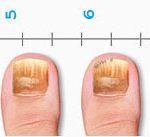Search
Learning Center
- Cosmetic
- Diabetic Issue
- Fitness and Your Feet
- Foot Care
- General
- Medical Care
- Diagnostic Procedures
- Diseases of the Foot
- Surgical Procedures
- Therapies
- Vascular/Nerve Problems
- Orthotics
- Nail Issue
- Pain
- Achilles Pain
- Ankle Pain
- Arch and Ball Pain
- Deformities
- Tarsal Coalition
- Spurs
- Posterior Tibial Tendon Dysfunction
- Overlapping, Underlapping Toes
- Osteomyelitis (Bone Infections)
- Mallet Toes
- Gordon Syndrome
- Enchondroma
- Dysplasia
- Clubfoot
- Amniotic Band Syndrome
- Hallux Varus
- Hallux Rigidis (rigid big toe)
- Hallux Limitus (stiff big toe joint)
- Claw Toe
- Haglund's Deformity
- Sesamoiditis
- Metatarsalgia (foot pain in ball)
- Flat Feet (over pronation)
- Peroneal Tendon Dislocation/Dysfunction
- Hammertoes
- Bunions
- Heel Pain
- Toe Pain
- Shoes
- Skin Issue
- Sports Injury
Fungal Nails
Lasers
Make an Appointment?
Interested in a professional’s opinion? Schedule an appointment today!
Schedule an AppointmentFungal Nails
Lasers
Photos

Since fungal nails are usually more resistant and more difficult to treat than Athlete’s foot, topical or oral antifungal medications may be prescribed. Permanent nail removal is another possible form of treatment for fungal nails.
After a fungal nail infection has cleared up, you can take steps to prevent the infection from coming back.
Keeping the fungus under control will help prevent a fungal infection of the skin from reinfecting the nail. Before bed, thoroughly wash and dry your feet, and apply a non-prescription anti-fungal cream to the entire foot from the ankle down. Use the cream every night, then gradually apply it less often. Keep your feet dry. Dry feet are less likely to become infected. Apply powder to your dry feet after you take a shower or bath.

Other tips:
- Don’t share nail clippers or nail files with others.
- Don’t share shoes or socks with others.
- Try not to injure your nail, such as by cutting it too short (trauma to the nail may lead to infections).
- Wear dry cotton socks, and change them two or three times a day if necessary.
- Wear dry shoes that allow air to circulate around your feet (tight, enclosed, moist shoes contribute to fungal toenail infections).
- Wear shower sandals or shower shoes when you are at a public pool or shower.
Prevention
Follow basic foot care guidelines and you more than likely can head off most common foot fungus problems.
NovoNail – The elite provider network of antifungal technology
Looking for information about the Laser Treatment of Fungal Nail? Click HERE[/vc_column_text][/vc_column][/vc_row]













